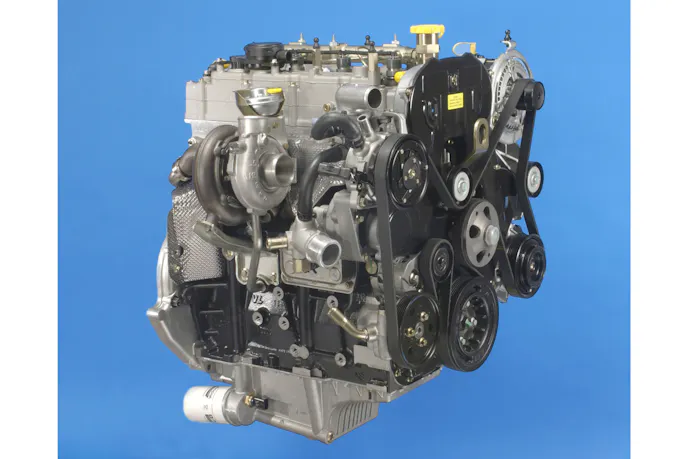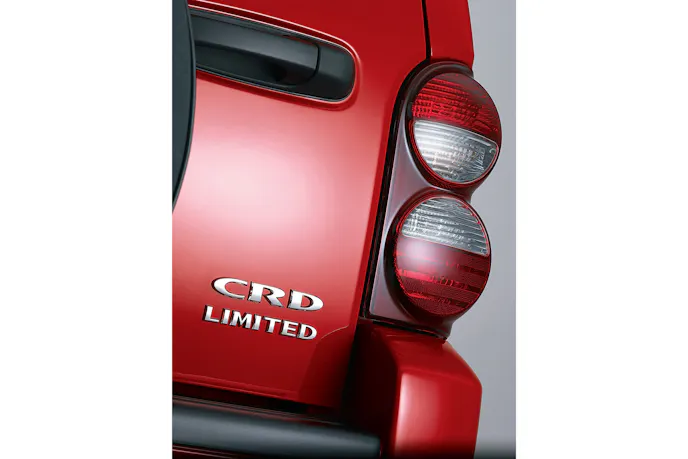When enthusiasts think of diesel SUVs, European brands often come to mind—Mercedes, BMW, or Land Rover. But in the mid-2000s, Jeep quietly slipped a turbodiesel option into its lineup. The diesel-powered 2005-2006 Jeep Liberty CRD had a dose of low-end torque and efficiency that set it apart from its gasoline-powered siblings. This short-lived experiment—an experiment that wasn’t fit to be sold in California—remains a fascinating chapter in Jeep history.

The 2.8-Liter Engine At The Heart Of The Liberty CRD
From 2005 to 2006, Jeep offered the Liberty CRD (Cherokee CRD overseas) with a 2.8-liter inline-four common-rail diesel (that’s the CRD part) mated to a five-speed automatic transmission. The turbodiesel was sourced from VM Motori, an Italian engine manufacturer with a long track record of supplying durable diesels. This engine featured a variable-geometry Garrett turbocharger, direct injection, and an intercooler, allowing it to deliver a respectable 160 horsepower and 295 lb-ft of torque.
While the power figures didn’t top the gasoline V6, torque was where the diesel shined. That near-300 lb-ft figure arrived low in the rev range, giving the Liberty/Cherokee strong pulling power off the line and making it a surprisingly capable tow rig for its size. Properly equipped, it could tow up to 5,000 pounds, matching or exceeding many larger SUVs of its era.

Efficiency And Practical Benefits
Fuel economy was another advantage. Owners routinely reported mid-20s mpg on the highway, a significant improvement over the thirsty 3.7-liter V6, which often struggled to crack 20 mpg. For drivers who racked up highway miles, the diesel made a real difference at the pump—especially in an era before today’s efficiency standards reshaped SUVs. Beyond fuel savings, the diesel’s range was notable. With its standard tank, many owners saw 500+ miles between fill-ups, a figure gas-powered Liberty drivers could only dream about.

What Made The Diesel Jeep Liberty Unique
The diesel Cherokee/Liberty stood out not only because it was rare, but because it was one of the very few compact/mid-size SUVs in the American market to offer a diesel engine at the time. While diesels were common in Europe, U.S. emissions standards and consumer preferences made them an unusual sight stateside. Jeep’s gamble in coupling a diesel powerplant with off-road prowess (in the form of four-wheel drive, a two-speed transfer case, and high ground clearance) was a bold move.
Unfortunately, the diesel option was discontinued in the U.S. after 2006 due to tightening emissions regulations and limited demand. The gas-powered Jeep Liberty survived through model-year 2012.

A Fun Experiment
Though brief in production and now relegated to internet lore, the 2005–2006 Jeep Liberty CRD holds a special place in hearts of the few who loved and owned them. For everyone else, it’s never too late. For those in the market for a quirky, clattery diesel oddball, we found an oil-burning Jeep Liberty for $3,500 (180,000 miles). With its torque-rich 2.8-liter VM Motori engine, impressive towing capacity, and uncommon efficiency, it proved that diesels could make sense in compact SUVs. For enthusiasts, it remains a reminder of a time when Jeep dared to try something different.
You might also like
Ram’s Heavy Duty Lineup Once Again Helps Power Macy’s Thanksgiving Day Parade
Ram marked its 11th consecutive year as the official truck sponsor of the Macy’s Thanksgiving Day Parade by supplying 76 trucks and vans.











